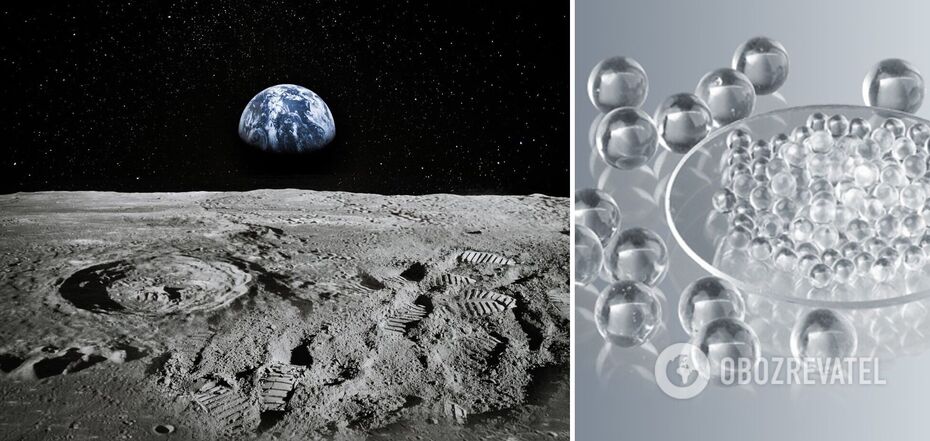Life
Glass beads found on the Moon: how they formed there and why scientists are excited
In 2020, glass beads containing water were found in the soil collected on the Moon by the Chinese spacecraft Chanye-5 mission. Scientists estimate that this may indicate the presence of about 300 billion tonnes of water on the lunar surface, which can be used by astronauts on future missions.
The results of the study, which was carried out by a team of 28 scientists from China with the participation of scientists from the UK, were published in the journal Nature Geoscience. The researchers found that it would be very easy to extract water from these balls. They were also able to solve the mystery of the appearance of such beads.
"This will open up new avenues that many of us have been thinking about. If you can extract water and concentrate it in significant quantities, it's up to you how you use it," said Mahesh Anand, one of the study participants, professor of planetary science and research at the Open University, according to The Guardian.
People have known about the existence of water on the Moon for a long time, but this study has shown how easy it will be to get it.
For the study, the scientists had 150 glass beads less than a millimetre in size, which were found in the soil delivered by the Changi 5 spacecraft to Earth.
The researchers found that it was relatively easy to extract water from these beads.
"It doesn't mean that you can shake the material and the water will start dripping out, but there is evidence that when the temperature of this material rises above 100°C, it will start to come out and it can be collected," Anand said.
Another study participant, Sen Hu of the Chinese Academy of Sciences laboratory, also told Insider that each bead is not a significant source of water on its own, as it is only 0.2% water. However, the fact that the beads make up 3 to 5% of the lunar soil collected has helped scientists estimate that these particles could contain up to 297 billion tonnes of water.
Nanjing University researcher Hejue Hui, who also participated in the study, told CNN that the findings are a step towards finding resources that could later be used for drinking water or even rocket fuel.
"This is one of the most exciting discoveries we've made. With this discovery, the potential for sustainable lunar exploration is higher than ever before," Anand added.
How glass beads formed on the Moon
According to scientists, water appeared on the Moon thanks to the solar wind. The fact is that this wind carries hydrogen, one of the two elements that make up water, to the lunar surface. There, hydrogen combines with oxygen contained in the lunar rocks to form water, which is stored inside the beads.
The beads themselves are formed as a result of small meteorites falling on the surface of the Earth's satellite. During such collisions, the meteorite melts together with the material on the lunar surface, resulting in the appearance of beads.
According to the researchers, this process means that the beads of water will be replenished naturally as the solar wind continues to blow over the Moon.
Earlier, OBOZREVATEL also reported that China had discovered a new crystal from the Moon and confirmed the existence of a source of potential infinite energy.
Subscribe to OBOZREVATEL's Telegram and Viber channels to keep up with the latest developments.



























